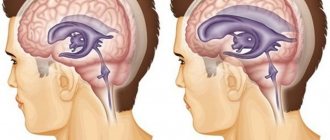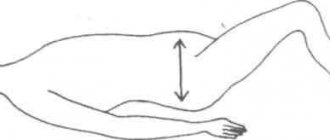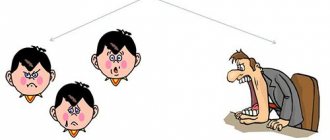What is cognitive behavioral therapy, at the intersection of what areas of psychotherapy was it formed, what techniques does it use and what psychological problems does it help resolve? In the treatment of what mental disorders is it effective? Is it capable of teaching a person to live in harmony with himself and the real world? These and other questions in this area of psychotherapy became the subject of discussion with the Chief Medical Doctor, practicing psychiatrist, psychiatrist-narcologist and psychotherapist Vladislav Sipovich.
What is cognitive behavioral therapy and what are its benefits?
Cognitive-behavioral therapy (CBT) is a fairly common integrated area of psychotherapy that combines two approaches to the treatment of mental disorders - cognitive and behavioral psychotherapy. Also known as cognitive behavioral psychotherapy (CBT). Its distinctive feature is its short-term nature, focusing on correcting errors in thinking and behavioral skills, adapting emotional and behavioral reactions to the needs of the client and achieving success in performing social, professional, family, creative and other functions.
Cognitive psychotherapy for personality disorders is based on the principle of recognizing that their main cause is thinking errors in the form of illogical, inadequate and inappropriate beliefs that a person follows consciously or unconsciously. By changing incorrect thinking stereotypes to more functional and realistic ones, you can completely change a person’s worldview on his own inner world and attitude towards the reality around him. This is achieved by encouraging and consolidating positive thoughts and beliefs, as well as by denying unwanted, damaging forms of thinking.
Behavioral therapy focuses on correcting behavioral skills without delving deeply into the patient's mind and way of thinking. Teach a person to communicate correctly with others, avoid or painlessly resolve conflict situations, achieve goals, detect and eliminate harmful and inappropriate habits, etc. Cognitive-behavioral psychotherapy combines and enhances the therapeutic effects of both approaches, uses their techniques, and has clinically proven success in treating many mental disorders. A person can be taught a new line of behavior in certain situations, but only by changing his way of thinking, realizing the destructiveness of thoughts about his own insignificance, uselessness and inability to live, can a person radically change his destiny. Only a meaningful approach to one’s behavior is effective in any situation, and not just in those lost in behavioral psychotherapy sessions. But this is not the only advantage of CBT. Its advantages also include the following nuances: • Specification of circumstances. Like Gestalt therapy, CBT operates on the “here and now” principle. This means that the subject of consideration is not past mental trauma, but problems of the current time that a person is not able to resolve on his own. • Active work of the patient, who not only learns new skills, but also practices them in specific situations in order to use them in the future without seeking repeated help from a psychotherapist (what is the difference between a psychologist and a psychotherapist). • Fast therapeutic effect. Usually 5-10 sessions are enough to achieve a pronounced effect. • CBT has been proven effective in treating mental disorders in multiple clinical trials, which explains its growing popularity. The duration of CBT is determined purely individually and depends on the following factors: • The severity of the patient’s condition. • Set tasks. • The wishes of the patient himself. For some, 6-8 sessions are enough, while others feel the need to communicate with a cognitive psychotherapist for several months. And this does not indicate lack of effectiveness, but rather the comfort of the treatment process itself for the patient’s psyche. It should not be forgotten that the ultimate goal of CBT is to prepare a person to independently solve problems of various types, i.e. his “armament” with the emotions, thoughts, ways of behavior and communication necessary for personal development and success in life. What are the basic principles of CBT and how do they correlate with other areas of psychotherapy? As I already mentioned, cognitive behavioral therapy is a complex direction and therefore creatively combines the principles and techniques of its two components - behavioral and cognitive psychotherapy. From behavioral therapy, its basic principles were taken, based on the theory of behaviorism (translated from English as behavior). It assumes that human behavior is a set of unconditioned and conditioned reflexes developed on their basis, fixed or rejected by the individual’s individual history. The theoretical foundations of behaviorism were laid by Russian scientists S.M. Bekhterev. and Pavlov I.P., whom almost all well-known followers of behaviorism in the West consider their teacher. It is the principles of the formation and extinction of conditioned reflexes due to their reinforcement or non-reinforcement by unconditioned reflexes that formed the basis of the theory of behavioral psychotherapy. In addition, of fundamental importance in behaviorism and cognitive-behavioral psychology, respectively, is the concept of behavioral patterns that play a key role in the occurrence of many mental disorders. Patterns of behavior include, in stressful situations, certain vegetative-somatic and endocrine reactions that explain the development of psychosomatic disorders. In addition, the following postulates are of fundamental importance: • Use only methods that have proven their effectiveness in numerous experiments. • The relativity of the concept of normalcy and mental abnormalities. • Focus on developing optimal and desirable behavior for each individual patient. • Directiveness of the psychotherapist, which involves working according to a pre-developed scheme with answers to questions posed and performing recommended exercises with the inclusion of family members in homework. There are many methods of behavioral therapy, but in the practice of CBT the most recognized and widespread are the following: • Imitation of the desired behavior of a real person, a book or film character, or an invented symbolic model. • Role-playing training with training in certain behavioral skills under various problematic circumstances. For example, when communicating with a stranger or in conflict situations. Most often, the patient plays himself, but sometimes this role is played by a psychotherapist or another group member, which allows the patient to examine himself and his behavior as if from the outside and realize his mistakes. • Feedback, in which hardware monitoring of the patient’s stressful state is carried out and when a state of relaxation is achieved, it is reinforced with positive sound (favorite melody, sound of the sea, etc.) or visual images. • Psychological immunization, or stress-vaccination therapy, the main goal of which is psychological vaccination (sensitization) of the patient to face stressful situations of varying degrees of complexity. This allows you to move from a state of helplessness to self-control and the ability to successfully cope with stressful situations without their destructive consequences for the body and psyche. As for cognitive therapy, things are somewhat more complicated. To understand its basic principles included in CBT, one must first consider the goals and merits of cognitive therapy. Advantages of cognitive therapy: • The presence of a natural science base in the form of a psychological theory of normal development, as well as the occurrence of mental disorders. • Psychological models for each nosological group of mental pathologies. • Existence of own specific techniques and stages of treatment. • Relatively short course of therapy, including 20-30 sessions. • Humanistic orientation, putting the interests of the patient at the forefront. Among the main goals of cognitive therapy, which have been transferred to CBT, the following can be identified: • Help in solving the patient’s social, professional, family, career, creative and other problems. • Identifying and eliminating the causes of mental pathologies, in particular, correcting cognitive errors, eliminating dysfunctional beliefs and behaviors. • Partial or complete elimination of symptoms of mental disorders. • Reducing the likelihood of relapse. • Strengthening the therapeutic effect of pharmacological drugs. During the treatment process, a cognitive psychotherapist strives to achieve practical solutions to the following problems: • The patient’s awareness of the influence of his own thoughts on his behavior and emotional background. • The ability to identify, observe and evaluate so-called automatic thoughts. What it is? I'll tell you a little later. • Replacing erroneous mental attitudes with more rational and positive ones. • Identification and leveling of maladaptive beliefs as the basis of erroneous thoughts and behavioral reactions. As you can see, the complex merging of behavioral and cognitive therapy in CBT is completely justified and logical, because their common ultimate goal is improved socio-psychological adaptation to the conditions of the surrounding world and the achievement of harmony with oneself and the external environment.
Cognitive Behaviorism by Edward Tolman
General characteristics of classical behaviorism.
Behaviorism arose in the USA and was a reaction to the structuralism of V. Wundtai and E. Titchenera and American functionalism. Its founder was J. Watson (1878-1958), whose article “Psychology from the Point of View of a Behaviorist” (1913) marked the beginning of the direction. In it, the author criticized psychology for subjectivism, calling “... consciousness with its structural units, elementary sensations, sensory tones, attention, perception, representation in vague expressions alone,” as well as for practical uselessness. He declared the subject of behaviorism to be the study of behavior in an objective way and with the purpose of serving practice. “Behaviourism intends to become the laboratory of society.”
The philosophical basis of behaviorism is a fusion of positivism and pragmatism. As scientific prerequisites, J. Watson cited research on animal psychology, especially E. Thorndike, as well as the school of objective psychology. However, all these studies were, as Watson assessed them, “more a reaction to anthropomorphism than to psychology as a science of consciousness.”3 He also noted the influence of the works of I. P. Pavlov and V. M. Bekhterev.
Human behavior as the subject of behaviorism is all actions and words, both acquired and innate, what people do from birth to death. Behavior is any reaction (R)
in response to an external stimulus (5), through which the individual adapts. This is a set of changes in smooth and striated muscles, as well as changes in the glands that follow in response to an irritant. Thus, the concept of behavior is interpreted extremely broadly: it includes any reaction, including secretion of a gland and a vascular reaction. At the same time, this definition is extremely narrow, since it is limited only to what is externally observable: physiological mechanisms and mental processes are excluded from the analysis as unobservable. As a result, behavior is interpreted mechanistically, since it is reduced only to its external manifestations.
“The main task of behaviorism is to accumulate observations of human behavior in such a way that in each given case, given a given stimulus (or better yet, situation), the behaviorist can tell in advance what the reaction will be or, if a reaction is given, what situation will cause this reaction.” 4. These are the two problems of behaviorism. Watson classifies all reactions on two grounds: whether they are acquired or hereditary; internal (hidden) or external (external). As a result, reactions are distinguished in behavior: external or visible acquired (for example, playing tennis, opening a door, etc. motor skills); internal or hidden acquired (thinking, which in behaviorism means external speech); external (visible) hereditary (for example, grasping, sneezing, blinking, as well as reactions to fear, rage, love, i.e. instincts and emotions, but described purely objectively in terms of stimuli and reactions); internal (hidden) hereditary reactions of the endocrine glands, changes in blood circulation, etc., studied in physiology. Watson subsequently distinguished between instinctive and emotional reactions: “...if adaptations are caused by a stimulus of an internal nature and relate to the body of the subject, then we have an emotion, for example, blushing; if a stimulus leads to an adaptation of the organism, then we have an instinct—for example, grasping.”5
Observation of the newborn led to the conclusion that the number of complex unlearned reactions at birth and shortly after it is relatively small and cannot provide adaptation. The behaviorist does not find data confirming the existence of hereditary forms of behavior, such as crawling, climbing, pugnacity, or hereditary abilities (musical, artistic, etc.) - In practice, behavior is the result of learning. He believes in the omnipotence of education. “Give me a dozen healthy, strong children and people, and I will undertake to make each of them a specialist of my choice: a doctor, a businessman, a lawyer, and even a beggar and a thief, regardless of their talents, inclinations, tendencies and abilities, as well as profession and the races of their ancestors"6. Therefore, skill and learning become the main problem of behaviorism. Speech and thinking are considered as types of skills. A skill is an individually acquired or learned action. It is based on elementary movements that are innate. A new or learned element in a skill is the tying together or combining of separate movements in such a way as to produce a new activity. Watson described the process of developing a skill and built a learning curve (using the example of learning archery). At first, random, experimental movements predominate, with many mistakes and only a few successful ones. Initial accuracy is low. Improvement is fast for the first 60 shots, then slower. Periods without improvement are observed - these sections of the curve are called “plateaus”. The curve ends at the physiological limit characteristic of the individual. Successful movements are associated with greater changes in the body, so that they are better maintained and physiologically “therefore tend to be consolidated.
Retention of skills constitutes memory. In contradiction to the refusal to study unobservable mechanisms of behavior, Watson puts forward a hypothesis about such mechanisms, which he calls the principle of conditioning. Calling all hereditary reactions unconditioned reflexes, and acquired ones conditioned, J. Watson argues that the most important condition for the formation of a connection between them is the simultaneity in the action of the unconditioned and conditioned stimuli, so that stimuli that initially did not cause any reaction now begin to cause it. It is assumed that the connection is the result of a switching of excitation in the central authority on the path of a stronger, i.e., unconditioned stimulus. However, the behaviorist does not concern himself with this central process, limiting himself to observing the relationship of the response to all new stimuli.
In behaviorism, the process of skill formation and learning is interpreted mechanistically. Skills are developed through blind trial and error and are an unguided process. Here one of the possible paths is presented as the only and mandatory7. Despite these limitations, Watson's concept laid the foundation for a scientific theory of the process of motor skill formation and learning in general.
7 There is another way, which is based on managing the process of skill formation: a system of conditions necessary for an action is identified, and its implementation is organized focusing on these conditions.
By the mid-20s. behaviorism became widespread in America, which allowed E. Boring to write: “... it would not be an exaggeration to say that at present behaviorism is a typical American psychology, despite the fact that perhaps the majority of American psychologists will refuse to call themselves behaviorists"8. At the same time, it became increasingly clear to researchers that excluding the psyche leads to an inadequate interpretation of behavior. This was pointed out by E. Tolman in his criticism of Watson, calling his approach molecular9. Indeed, if we exclude its motivational-cognitive components from behavior, it is impossible to explain the integration of individual reactions into a particular act or activity such as “a person builds a house,” swims, writes a letter, etc. J. Watson’s statement that The behaviorist is interested in the behavior of the whole person, is in no way supported by his mechanistic atomistic position and even comes into conflict with it, which he himself admitted. “The behaviorist in his scientific activity uses tools, the existence of which he denies both in his object and in himself.” Due to the mechanism in the interpretation of behavior, a person in behaviorism acts as a reactive being, his active conscious activity is ignored. “Environmental conditions influence us in such a way that at a given moment, under given conditions, any object can only evoke a strictly corresponding and conditioned course of action”10. This does not take into account the qualitative changes that occur in behavior with the transition to humans: data obtained in animal studies are transferred to humans. Watson emphasized that he wrote this work and considered man as an animal organism. Hence naturalism in the interpretation of man. Man “...is an animal distinguished by verbal behavior”11.
The hidden basis of behaviorism is the identification of the psyche with its introspective understanding in the psychology of consciousness. According to Vygotsky and Rubinstein, ignoring consciousness, the psyche, instead of rebuilding the introspectionist concept of consciousness, is the essence of Watson's radical behaviorism. Obviously, it is impossible to base psychology on the denial of the psyche. At the same time, Watson's historical merit is the study of behavior and the acute formulation of the problem of an objective approach in psychology. Also important is the task he put forward to control human behavior, the focus of scientific research on connections with practical problems. However, due to the mechanistic approach to man as a reacting organism, the implementation of this task receives
behaviorism is a direction that dehumanizes a person: management begins to be identified with the manipulation of the individual.
Back in 1913, W. Hunter, in experiments with delayed reactions, showed that the animal reacts not only directly to the stimulus: behavior involves processing the stimulus in the body. This posed a new problem. An attempt to overcome the simplified interpretation of behavior according to the stimulus-response scheme by introducing internal processes that unfold in the body under the influence of a stimulus and influence the reaction was made by various variants of neobehaviorism. It also develops new models of conditioning, and the results of research are widely disseminated in various areas of social practice. The foundations of neobehaviorism were laid by E. Tolman (1886-1959). In his book, Purposeful Behavior in Animals and Man (1932), he showed that experimental observations of animal behavior do not correspond to Watson's molecular understanding of stimulus-response behavior. Behavior, according to Tolman, is a molar phenomenon, that is, a holistic act that is characterized by its own properties: goal orientation, intelligibility, plasticity, selectivity, expressed in the willingness to choose means leading to the goal in shorter ways. The introduction of the concepts of goal (intention) and field into the characteristics of behavior reflects Tolman’s position in relation to other directions in psychology: he recognized the compatibility of behaviorism with Gestalt psychology and depth psychology. Convinced of the complexity of the determination of behavior, Tolman distinguished three types of its determinants: independent variables (initial causes of behavior), stimuli and the initial physiological state of the organism; abilities, i.e. species properties of an organism; intervening internal variables - intentions (goals) and cognitive processes. Coming out against the subjectivist interpretation of these formations in the spirit of old mentalism, Tolman made the interfering variables the subject of his own experimental research. In experiments on latent learning, vicarious trial and error, hypotheses, etc., the concept of a “cognitive map” was formulated. A cognitive map is a structure that develops in the animal’s brain as a result of processing external influences. It includes a complex significative structure of the relationship between stimuli and goals (sign - gestalt) and determines the behavior of the animal in the situation of the actual task. The combination of such maps allows one to adequately navigate the situation of life tasks in general, including for a person. Despite all the reservations associated with attempts to avoid mentalism, in fact, as a result of the introduction of intermediate variables, behavior actually receives a psychological characteristic. Tolman extended the findings obtained on animals to humans, thereby sharing Watson’s biologizing positions.
A major contribution to the development of neo-behaviourism was made by K. Hull (1884-1952). His hypothetico-deductive theory of behavior was formed under the influence of the ideas of Pavlov, Thorndike, and Watson. His own experimental research was carried out in the field of learning in animals. Like Watson's theory, Hull's theory does not take into account the factor of consciousness, but unlike Watson, instead of the stimulus-reaction scheme, Hull introduces the formula proposed back in 1929 by Woodworth, stimulus-organism-reaction, where the organism is some invisible processes occurring within it processes. They can be described objectively, like stimulus and response: these are the results of previous learning (a skill, in Hull’s terminology), a deprivation regime, the derivative of which is drive, drug injections, etc. Behavior begins with stimulation from the external world or from a state of need and ends with a reaction . “The evolution of organic processes has led to the appearance of a form of nervous system in higher organisms which, under the influence of need and muscular activity, will cause, without previous training, those changes in movements that would have the potential to nullify the need. We call this kind of activity behavior”2. Using logical and mathematical analysis, Hull sought to identify the relationship between these variables, stimuli, and behavior. He formulated the laws of behavior—theoretical postulates that establish connections between the main variables that determine behavior. Hull considered rudeness to be the main determinant of behavior. The need causes the activity of the organism, its behavior. The strength of the reaction (reaction potential) depends on the strength of the need. Need determines the nature of behavior that differs in response to different needs. The most important condition for the formation of a new connection, according to Hull, is the contiguity of stimulus, reactions and reinforcement, which reduces the need. Thus Hull accepts Thorndike's law of effect. The strength of the connection (response potential) depends on the number of reinforcements and is a function of it, and it also depends on the delay of reinforcement. Hull emphasizes the crucial role of reinforcement in the formation of new connections. He is responsible for the thorough theoretical and experimental development and mathematical calculation of the dependence of the reaction on the nature of reinforcement (partial, intermittent, constant) and on the time of its presentation. These learning factors were complemented by principles. The fact that the animal behaved differently in different sections of the path in the process of developing a skill was revealed in experiments with mazes (the speed of going around dead ends at the beginning and at the end of the maze is not the same, and in the second case it is greater; the number of errors in sections far from the goal is greater than at the end of the maze; the speed of movement in a maze when going through it again is greater at the end of the path than at the beginning) is called the goal gradient. The phenomena described by Hull testified to the holistic—molar—nature of behavior. In the principle of the target gradient, Hull saw the similarity of his concept with the doctrine of field forces by K. Lewin. The integration of individual motor acts into a holistic behavioral act is facilitated by anticipatory reactions or anticipatory responses to irritation - experimentally discovered phenomena of partial responses that contribute to finding actions leading to the goal. Thus, it was observed that in the process of training the animal goes less and less deeply into dead ends or even only slows down its movements around them, just as in the process of developing a conditioned reflex there comes a moment when, before the appearance of danger, animals carry out protective, i.e., expedient, actions only when there is a danger signal. Hull considered anticipatory reactions as functional equivalents of ideas, goals, and intentions.
The experience of a mathematical approach to describing behavior in the Hull system influenced the subsequent development of mathematical theories of learning. Under the direct influence of Hull, N. E. Miller and O. G. Maurer began to study issues of learning. They created their own concepts, staying within the framework of traditional reinforcement theory, but using Hull's formal approach. K-Spence and his students A. Amsel, F. Logan continued the development of Hull's theoretical ideas.
Another version of the concepts of behavior that includes intermediate mechanisms in the structure of behavior is the theory of subjective behaviorism, which was proposed by D. Miller, Y. Galanter, K. Pribram. Under the influence of the development of computers and by analogy with the programs embedded in them, they postulated mechanisms and processes within the body that mediate the response to a stimulus and the reality of which is beyond doubt. They named the image and the plan as such authorities connecting stimulus and reaction. “Image is all the accumulated and organized knowledge of an organism about itself and about the world in which it exists... when using this term, we mean, in
basically the same type of representation that other cognitive theorists have demanded. It includes everything that the organism has acquired - its assessments along with facts - organized with the help of those concepts, images or relationships that it was able to develop: "1*. “A plan is any hierarchically constructed process of an organism capable of controlling the order in which any sequence of operations should be performed”14. The image is informative, and the plan is algorithmic aspects of the organization of behavior. Throughout, the authors point out the analogies of these formations to computer programs. Behavior is viewed as a series of movements, and a person is viewed as a complex computing machine. The strategy of the plan is built on the basis of tests carried out in the conditions created by the image. A test is the basis of a holistic process of behavior, with the help of which it becomes clear that the operational phase (operate) is carried out correctly. Thus, the concept of behavior includes the idea of feedback. Each operation is preceded by a test. A unit of behavior is described according to the scheme: T—O—T—E (result).
“...The T—O—T—E scheme states that the operations performed by the body are constantly regulated by the results of various tests.” The position of subjective behaviorism reflects the general trend in the development of behaviorism, when, in the words of the authors themselves, almost every behaviorist smuggles into his system one or another type of invisible phenomena - internal reactions, impulses, incentives, etc. ... this is what everyone does for one simple reason the reason that without this it is impossible to understand the meaning of behavior”,5. However, the authors never tire of emphasizing that these invisible phenomena - “intermediate variables” - should not be understood in the spirit of psychological concepts of subjective introspective psychology. Interpreting them by analogy with the design of calculating machines cannot be considered satisfactory, because in a machine, images and plans are material formations, the action of which occurs automatically, while the psyche appears as a necessary condition for the subject to perform an action in new circumstances. The authors anticipate that their explanation may be regarded as crude mechanistic analogies and hypotheses, but nevertheless consider them to accurately reflect the essence of behavior. In general, subjective behaviorism in the interpretation of behavior remains within the framework of mechanistic behaviorist methodology and does not reach a real explanation of the regulation of human behavior.
Meanwhile, outstanding psychologists appeared in the circle of behaviorists who questioned this postulate. The first of them was a professor at the University of Berkeley (California), an American, Edward Tolman (1886-1959), according to whom the formula of behavior should consist not of two, but of three members, and therefore look like this: stimulus (independent variable) - intermediate variables - dependent variable (response).
The middle link (intermediate variables) is nothing more than mental moments inaccessible to direct observation: expectations, attitudes, knowledge.
Following the behaviorist tradition, Tolman experimented with rats looking for a way out of a maze. The main conclusion from these experiments was that, based on the behavior of animals strictly controlled by the experimenter and objectively observed by him, it can be reliably established that this behavior is controlled not by the stimuli that are acting on them at the moment, but by special internal regulators. Behavior is preceded by a kind of expectations, hypotheses, and cognitive “maps.” The animal builds these “maps” itself. They guide him in the labyrinth. From them it, being launched into the labyrinth, learns “what leads to what.” The position that mental images serve as a regulator of action was substantiated by Gestalt theory. Taking her lessons into account, Tolman developed his own theory, called cognitive behaviorism.
Tolman outlined his ideas in the books “Target Behavior in Animals and Humans” and “Cognitive Maps in Rats and Humans.” He carried out experimental work mainly on animals (white rats), believing that the laws of behavior are common to all living beings, and can be most clearly and thoroughly traced at the elementary levels of behavior.
The results of Tolman’s experiments, presented in his main work “Goal-directed behavior in animals and humans” (1932), forced a critical rethinking of the cornerstone scheme of SR (“stimulus-response”) behaviorism.
The very idea of goal-directed behavior contradicted the programmatic guidelines of the founder of behaviorism, Watson. For classical behaviorists, goal-directed behavior implies the assumption of consciousness.
To this Tolman stated that it does not matter to him whether an organism has consciousness or not. As befits a behaviorist, he focused on external, observable reactions. He proposed that the causes of behavior included five major independent variables: environmental stimuli, psychological drives, heredity, prior learning, and age. The behavior is a function of all these variables, which can be expressed by a mathematical equation.
Between the observed independent variables and the resulting behavior, Tolman introduced a set of unobservable factors, which he called intervening variables. These intervening variables are actually determinants of behavior. They represent those internal processes that link the stimulus situation to the observed response.
Thus, the SR formula should be read as SO R. Intermediate variables are everything that is associated with O, that is, with the organism, and forms a given behavioral response to a given irritation.
However, while remaining in the position of behaviorism, Tolman was aware that since intermediate variables are not subject to objective observation, they are of no practical use to psychology unless they can be linked to experimental (independent) and behavioral (dependent) variables.
A classic example of an intervening variable is hunger, which cannot be observed in a test subject (whether animal or human). Nevertheless, hunger can be quite objectively and accurately linked to experimental variables, for example, to the duration of the period of time during which the body did not receive food.
In addition, it can be linked to an objective response or to a behavioral variable, such as the amount of food eaten or the rate of food absorption. Thus, this factor becomes available for quantitative measurement and experimental manipulation.
In theory, intervening variables have proven to be a very useful construct. However, the practical implementation of this approach required such enormous work that Tolman eventually abandoned all hope of “compiling a complete description of even one intermediate variable.”
The results obtained in the experiments forced Tolman to abandon the law of effect, which was fundamental for the entire behavioral doctrine, discovered by Thorndike. In his opinion, reinforcement has a rather weak effect on learning.
Tolman proposed his own cognitive theory of learning, believing that repeated performance of the same task strengthens the emerging connections between environmental factors and the organism's expectations. In this way, the body learns about the world around it. Tolman called such connections created by learning Gestalt signs.
Historians of science make a bold assumption that the father of behaviorism, John Watson, suffered from a specific disorder - an-ideism, that is, he was completely devoid of imagination, which forced him to interpret all observed phenomena purely literally.
Tolman cannot be denied creative imagination, however, he also based his theoretical reasoning on objectively observable phenomena. What did he see in his experiments that made him go beyond Watson's ideas?
Here is a rat running through a maze, randomly trying either successful (you can move on) or unsuccessful (dead end) moves. Finally she finds food. During subsequent passages of the maze, the search for food gives the rat's behavior purposefulness.
Each branching move comes with some expectations. The rat comes to “understand” that certain signs associated with the fork do or do not lead to the place where the desired food is located.
If the rat's expectations are met and it actually finds food, then the gestalt sign (that is, the sign associated with some choice point) receives reinforcement. Thus, the animal develops a whole network of gestalt signs at all choice points in the maze. Tolman called this a cognitive map.
This pattern represents what the animal has learned, not just a collection of some motor skills. In a certain sense, the rat acquires a comprehensive knowledge of its labyrinth, and in other conditions - of a different environment around it. Her brain develops something like a field map that allows her to move in the right direction without being limited to a fixed set of learned body movements.
In a classic experiment described in many textbooks, Tolman’s ideas found clear and convincing confirmation. The maze used in this experiment was cross-shaped. Rats of the same group always found food in the same place, even if, in order to get to it, they sometimes had to turn left rather than right at different entry points into the maze. The motor reactions, of course, were different, but the cognitive map remained the same.
The rats of the second group were placed in such conditions that they had to repeat the same movements each time, but the food was in a new place each time.
For example, starting at one end of the maze, a rat found food only by turning right at a certain fork; if the rat was launched from the opposite side, then in order to get to the food, it still had to turn to the right.
The experiment showed that the rats of the first group—those who “studied” and “learned” the general scheme of the situation—orientated much better than the rats of the second group, which reproduced learned reactions.
Tolman suggested that something similar occurs in humans. A person who has managed to navigate a certain area well can easily go from one point to another along different routes, including unfamiliar ones.
Another experiment examined latent learning, that is, learning that cannot be observed while it is actually happening.
A hungry rat was placed in a maze and allowed to roam freely. For some time the rat did not receive any food, that is, no reinforcement occurred. Tolman was interested in whether any learning takes place in such an unreinforced situation.
Finally, after several non-reinforced trials, the rat was given the opportunity to find food. After this, the speed of completing the maze increased sharply, which showed the presence of some learning during the period of absence of reinforcement. This rat's performance very quickly reached the same level as that of rats that received reinforcement on every trial.
It would be wrong to perceive Tolman as a “rat mentor”, far from human problems. His article, revealingly titled “Cognitive Maps in Rats and Humans” (also available in Russian translation), became not only a collection of evidence against the S ® R scheme, but also a passionate appeal to reduce the level of frustration, hatred and intolerance generated in society by narrow cognitive maps.
What is the essence of cognitive behavioral therapy?
The essence of CBT cannot be understood without its basic concepts, among which the most important are: • Schemas, which are deep mental attitudes responsible for a person’s attitude towards himself and the realities of life. They can be adaptive and non-adaptive (the whole world is a mess, and there is no point in trying to figure it out), positive and negative, idiosyncratic (individual) or universal. • Automatic thoughts are conclusions that form in the mind so quickly that they do not have time to be fully comprehended, but they manage to influence emotions, the adoption of one decision or another, and the behavioral response of the individual. Usually these are frequently repeated thoughts when communicating with people around you - parents, children, bosses, friends and colleagues. After automation, the brain gets used to not thinking about thoughts, but simply “retrieving” them from memory along with the emotions and action patterns they previously evoked. If the experience of an automatic thought has brought positive results, then it can be useful in making a quick decision, but if the automatic thought was initially incorrect, then following it can only do harm. That is why identifying such thoughts, extracting them from the subconscious and convincing counterargumentation makes it possible to rewrite erroneous mental attitudes and accordingly change behavior patterns. • Cognitive errors, or otherwise distorted thought patterns that incorrectly reflect existing reality. • Arbitrary conclusions are conclusions made without confirmation by facts or in the presence of facts that contradict this conclusion. • Overgeneralization. Occurs when comprehensive conclusions are drawn from a single episode. • Exaggeration and understatement of one's role and the significance of ongoing events. By exaggerating the complexity of the situation, the individual underestimates his capabilities in resolving it. • Personalization - observed when the patient considers certain external events as relevant to him, when in fact they do not concern him at all. • Maximalism - putting forward excessive demands on oneself or the world around us in the form of opposing attitudes. For example, “if I don’t make a million, then I’m a complete insignificance,” “if I don’t become famous, then this life will be a swamp,” etc. • Obligation is an overdeveloped sense of duty and responsibility, often imposed from the outside and not allowing for alternative behavior. It can seriously poison a person’s life and prevent him from self-realization. The psychotherapist faces the difficult task of determining the predominant motive that led to mental disorder and irrational behavior, especially since there may be several of them. The doctor should find out all this and develop a treatment plan already in the first sessions, and the patient’s task is to help him with this. First of all, when preparing for the visit, it is advisable for the patient to think through and formulate the final goals of treatment in advance, i.e. what he would like to achieve and/or get rid of.
How are CBT sessions conducted and what techniques are used?
Treatment with a cognitive psychotherapist takes place in the form of 1-2 sessions per week, the total number of which is 20-30 sessions. As I already said, it is very important before the first session that the patient first decides on the goals of psychotherapy. First of all, he must answer the following questions: • What does not suit you in your life, character, relationships and what specifically would you like to change - relationships in the family, work team, with the opposite sex, or maybe you want to find yourself in a new social role or bring back creativity? • What bad habits or addictions would you like to get rid of (for example, gambling addiction) and what useful skills would you like to acquire? All these problems need to be discussed with a psychotherapist at the first session, who will help to specify them and prioritize them. At the same time, he can offer the patient to undergo a series of tests to objectively assess his mental and moral state, the results of which, by comparison, can be used to monitor the effectiveness of the therapy, to determine its tactics and select the optimal CBT techniques in each specific case. The choice of CBT techniques and methods is huge. In addition to those borrowed from behavioral therapy, cognitive therapy techniques are widely used, namely: 1. To identify automatic thoughts: • Recording thoughts when performing necessary and not performing unnecessary actions. Moreover, this should happen in the order in which thoughts arise, which will make it possible to identify their priority in motivating the patient’s actions. Usually the first thought that comes to mind will be the most important. The main efforts of a cognitive psychotherapist should be directed at its correction. • Cognitive rehearsal, associated with the mental playback of negative situations and verbal voicing of emerging automatic thoughts. All results of the experiment are recorded in a separate diary of thoughts, which also records all the thoughts that arise in the patient over several days in order to identify the most significant ones. • Detachment is a kind of abstraction from one’s own thoughts and its objective assessment. Allows you to highlight and realize the spontaneity of bad thoughts, the automatic nature of their occurrence, inherent in previous negative experiences, as well as their non-adaptive nature, i.e. the ability to cause destructive negative emotions.
2. After identifying automatic thoughts, the most difficult work begins: changing them and correcting distortions. To do this, the following methods are used: • Argumentation and counterargumentation with writing down and repeatedly reading the arguments “for” and “against” when an automatic thought appears. With frequent reproduction, the human brain will remember useful arguments and remove “harmful” motives from quick memory. • Speaker technology. It consists of filling out a table with several columns - the first one records the problem, the 2nd - the accompanying feelings and emotions, the 3rd - the automatic thoughts that arise in this case, the 4th - the arguments for them, and the 5th - th – “against”. • Identifying the pros and cons of the problem in the short and long term. • Conducting experiments to test the correctness of judgments. For example, an offer to evaluate a situation without emotion or imagine how other people would react to it. • Discussing past events with witnesses, especially in situations with patients whose memory is distorted or replaced by fantasies, for example, in schizophrenia. The method is also relevant in case of misinterpretation of the behavior and motives of other people. • Imagination. This is especially true for anxious patients, in whom maladjustment is caused not so much by automatic thoughts as by obsessive images. A variety of techniques are used here, including metaphors, poems, parables for greater clarity, commands to oneself to “stop!”, replacing a negative image with a positive one, etc. • Replacement of emotions and revaluation of values. • Appeal to the experience of the psychotherapist himself, statistical data, fiction, etc. 3. At the next stage, they focus on identifying logical errors and contradictions in judgments. The following techniques are most often used here: • Graduality, or scaling, when extreme polarization of judgments using a scale is excluded, i.e. placing them according to the degree of objective reflection of reality. • Reattribution is a review of the patient’s measure of responsibility for his actions in a given situation, which is important for a correct assessment of one’s own contribution and external factors in the development of events. • Exaggeration – taking a certain belief of the patient to extremes or absurdity and thus encouraging it to be re-evaluated.
4. Assessing the likelihood of the worst case scenario allows you to narrow the time frame of the problem and reveal its true significance in the patient’s life: • Decentering, when the patient’s ideas that he is the center of everyone’s attention and that the whole world is aimed against him lead to a state of discomfort and provoke sociopathic thoughts. • Decatastrophization. It is used for various anxiety disorders and forces the patient to think about a realistic assessment of the consequences of the events that worry him. For example, if this does happen, what will happen - will your career be destroyed, or you will die, or your family will abandon you, or will all this last forever? The answers to these questions will allow a person to understand the transitory nature of the problem, and the automatic thought of its infinity will simply disappear. To consolidate the positive effect of CBT, it is important to use exercises such as: • Repetition - repeated repetition of the desired thinking and behavior in practice, and with the consolidation of positive emotions and thoughts. • Together with the psychotherapist, development of a plan for future actions, including conditions and deadlines for implementation, as well as the sequence of actions in the event of extreme or unforeseen situations. And this is not a complete list of techniques used in cognitive behavioral therapy, which are combined into blocks according to specific goals, stages of therapy, nosological forms of mental disorders, as well as the degree of their severity. You can imagine what a colossal arsenal of knowledge, experience and intuition a cognitive psychotherapist must have in order to select the optimal treatment regimen for the patient and adjust it depending on whether progress is achieved or not.
Benefits of CBT
The cognitive-behavioral approach to psychological therapy has a number of advantages:
- The effectiveness of therapeutic work, proven using examples of various disorders. For example, according to a study of the use of cognitive therapy methods in the treatment of migraine, the effectiveness was 68%.
- Relative short-term therapy. Work in the cognitive-behavioral approach lasts 10-20 sessions.
- The foundation is in the form of a scientific base. The approach is based on specific scientific concepts of various sciences: cognitive psychology, psychophysiology, neurobiology, etc.
- Clear structure of therapy. The therapy plan is discussed with the client, work is carried out according to it and remains clear to the client.
- Therapy has specific goals. The goals and objectives of therapy are discussed by the psychologist and the client at the beginning of therapy, the work is aimed at the most interesting areas of a person’s life at the moment.
- The psychologist becomes a partner for the client; in therapy, he proceeds from his interests, taking into account his opinion.
- Absence of irrational components. Therapy is based on specifically existing problems and judgments, without affecting the worldview and religious sphere.
- This paradigm is one of the few recognized at the level of insurance companies abroad (that is, the costs of psychotherapy in some cases are covered by health insurance).
For what types of mental disorders is cognitive behavioral therapy indicated?
CBT has proven successful in treating many mental disorders, in particular: • Depression. • Increased anxiety and even its generalized forms. • Panic attacks. • Hypochondria. • Post-traumatic syndrome. • Phobias of various genesis and nature. • Eating disorders and their extreme manifestations in the form of psychogenic anorexia. • Fear of public speaking. • Sociopathic disorders. • Chronic pain. • Psychological problems in the family, athletes, schoolchildren, temporarily isolated persons and other categories of the population, including preschoolers and pensioners. In combination with drug therapy, CBT has proven its effectiveness in treating diseases such as: • Various types of addictions, including alcohol and drug addiction. • Schizophrenia and hallucinations that accompany it. • Severe depressive states. • Bipolar disorder (split personality). • Psychoses. • Somatic disorders – hypertension, colitis, chronic fatigue syndrome, etc.
The scope of CBT is constantly expanding, and the direction itself is gaining more and more popularity. This is explained primarily by its safety for the patient, minimal interference in deep mental processes and its focus on adapting the patient to the changing modern world. The most important thing that CBT allows you to achieve is the ability to maintain your emotional and mental status in any, even the most stressful and seemingly catastrophic situations.









